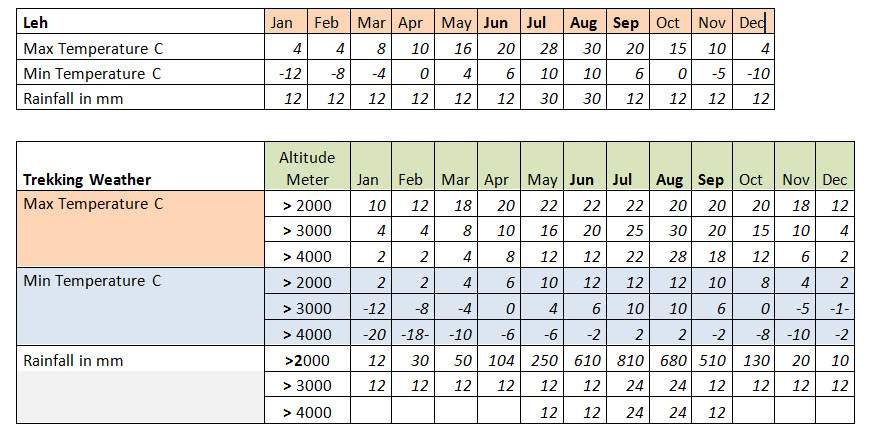Country Information Ladakh (India)
About Ladakh
In today’s India, Ladakh is a region naturally tailored to hiking and trekking. The insider’s tip for trekking enthusiasts and lovers of original culture. Barren, mountainous landscapes, snow-capped mountains, small mountain villages, green oases, ancient fortresses, monasteries and the Tibetan Buddhist culture, characterise this corner of the Earth.
Here, unlike Tibet, where the Buddhist culture was largely destroyed by the occupying Chinese forces but many Tibetan Buddhist customs and traditions have been preserved in Ladakh. The opportunity to experience this culture is why Ladakh is known as “Little Tibet”
The former kingdom of Ladakh is located in an inland region of the Tibetan plateau in the western Himalayas and joined India in the 1940s. Ladakh extends between the mountain ranges of the Himalayas and the Karakorum mountains in the upper Indus valley. It is mainly an alpine region, dry and sparsely populated with just 290,000 inhabitants and is located south of the Silk Road. Its location was ideal for traders from southern China and Tibet who wanted to travel to western areas like Zanskar and Kashmir. The town of Leh was at the centre of this connection and was a flourishing city, like an oasis in a cold desert. Ladakh is surrounded by high Himalayan peaks of 7,000 m and 6,000 m like Nun (7,135 m), Stok Kangri (6,121 m), and Kanglachen etc.
Ladakhi, Hindi and English are common in large cities such as Leh. There are good, daily flight connections between Delhi and Leh.
Visa
A visa is always required for entry to India. Since November 2014, under certain conditions, you can apply for an electronic tourist visa (e-Tourist Visa – e-Tv). You can find a list of the requirements for an electronic visa at https://indianvisaonline.gov.in/visa/tvoa.html. You can also apply for a visa under the link. Please note that the tourist visa must be applied for in good time (at least 28 days before the start of your visit) so that no travel complications occur. If you have any questions, we will be happy to help you.
Vaccinations
No specific vaccinations are required for travelling to Ladakh (India). However, vaccinations against hepatitis, tetanus, diphtheria, polio and typhoid are recommended. We advise you to speak your family doctor approx. 3 months before your trip and in the case of physical weaknesses; a health check should be carried out beforehand.
Money
You should bring with you a debit card with a PIN (international), a credit card and cash in either Euros or dollars. In cities like Delhi and Leh you can withdraw money at ATMs or change money using your debit card or credit card. The local currency is the Indian Rupee (INR). One EUR is equivalent to approx. 90 INR.
Weather
The climate in Ladakh is very dry and rainfall is rare. However, short periods of rainfall may still occur in summer but they do not compare to the monsoon rains. Ladakh is the only region in the whole of India that is not affected by the monsoon. The enchanting landscape reflects this.
The best time to visit Ladakh is between June and September. July and August are classed as high season and are particularly warm. Large differences in temperature are to be expected. During the day it can be hot in the cities with temperatures reaching over 35°C and at night they can drop to approx. 20°C. In July and August, the snow line usually lies at approx. 5,500 m and thus, the overnight temperature does not fall below 0°C.
June and September are a particularly beautiful time to travel with the ambient daytime temperatures and beautiful colours of nature and there are also fewer tourists in September. In June there are more domestic tourists and fewer western tourists.
Weather Overview Ladakh (India)






